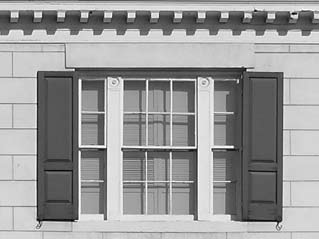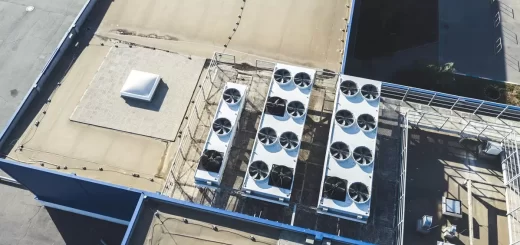The Difference Between Water Extraction and Water Mitigation
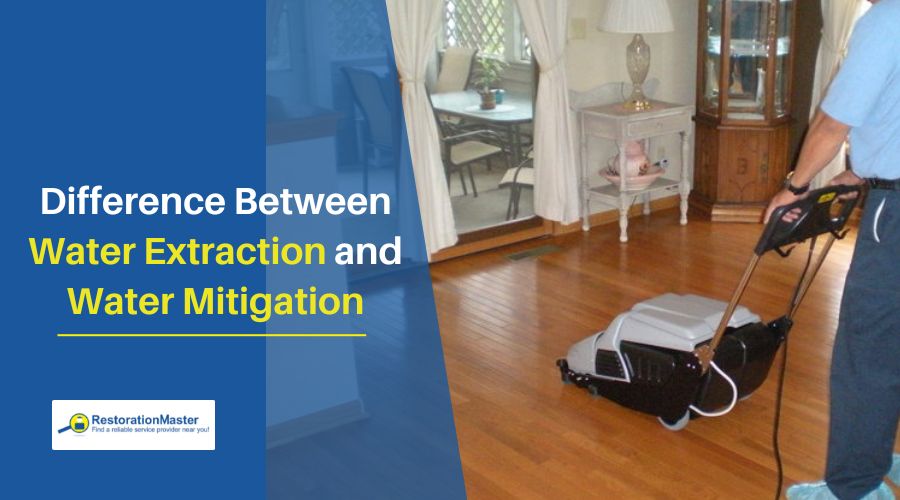
When water damage occurs, there is no time to waste. Whether it’s from a plumbing leak or natural disaster, excess water needs to be removed as soon as possible – the longer it remains in the property, the more problems arise. If left untreated, excessive moisture can compromise the integrity of the building, cause severe structural damage, and result in moldMold is a type of fungus that grows in damp or humid conditi... More growth and toxin production. To prevent permanent loss of property and serious health hazards, you need to take quick and efficient measures to mitigateTo mitigate is to reduce or limit the severity of damage, ri... More and restore the damage.
Water damage cleanup and restoration is a complex process that involves several steps – water extraction, water mitigation, water damage repairRepair is the act of fixing or restoring damaged property, m... More, moldMold is a type of fungus that grows in damp or humid conditi... More mitigation, etc. The first thing to do, however, is to remove all the water from the affected area to prevent it from spreading and causing further damage.
What Is Water Extraction?
Water extraction is the process of removing all standing water and excess moisture from the property. It not only helps prevent more severe structural damage, but also speeds up the dryingDrying is the process of removing moisture from materials, s... More process and minimizes the risk of moldMold is a type of fungus that grows in damp or humid conditi... More growth and secondary water damage.
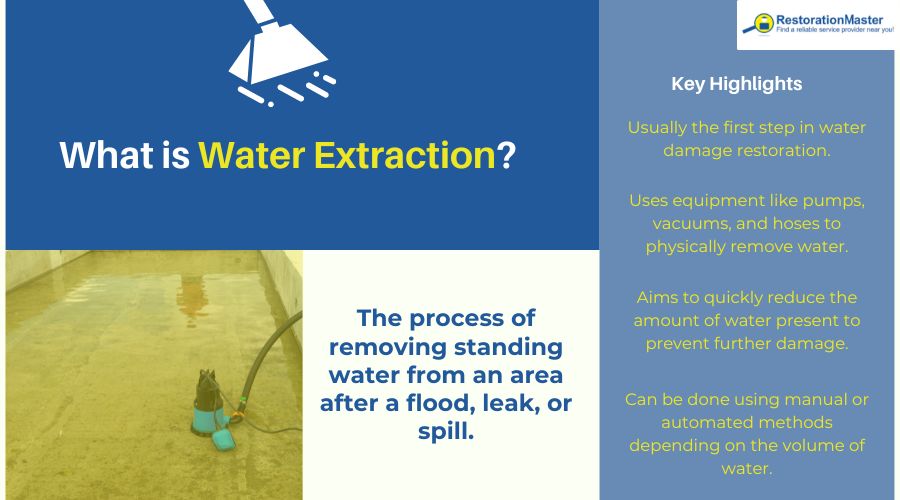
The first step is to remove standing water with the help of industrial strength wet/dry vacuums and powerful submersible pumps:
- Vacuums can be used to remove excess water from hardwood floors, carpets, and porousPorous describes a material that contains small openings or ... More surfaces. They work by putting down a cleaning solutionA solution is a homogeneous mixture of two or more substance... More (to disinfect the affected area) and vacuuming up the moisture (the extracted water is held in a tank);
- Pumps can remove gallons of water at a time. They work by pumping up the water and taking it to the outside through a drain or an opening in the building. If the water level is high, a submersible pump is used to pump out the water continuously.
Other professional water removal equipment may also be used in the extraction process:
- Moisture detectors and hygrometers that measure the extent of moisture saturationSaturation is the point at which a material or environment c... More;
- Infrared cameras that help find “hidden” water behind walls and ceilings;
- Truck-mounted and portable extraction units; etc.
Efficient water removal includes extracting water from wet surfaces that don’t have standing water as well – so that any water that is trapped in the cracks and grooves of the surface is completely removed. Once all the water has been removed, the mitigation process can then begin.
What Is Water Mitigation?
By definition, mitigation is the process of reducing the loss of property due to disaster. Water mitigation, in particular, refers to the process of cleaning, sanitizing, and dryingDrying is the process of removing moisture from materials, s... More a property in order to minimize the amount of water damage that occurs after a pipe leak, sewageSewage is wastewater containing biological and chemical cont... More backup, floodingFlooding is the overflow or accumulation of water in areas t... More, or some other kind of disaster. In other words, water mitigation is the process of preventing further water damage by taking quick and appropriate actions, such as removal of unsalvageable contents, cleaning of the affected areas, application of disinfecting agents, and deodorizing and dryingDrying is the process of removing moisture from materials, s... More the structureStructure refers to the framework or components of a buildin... More.
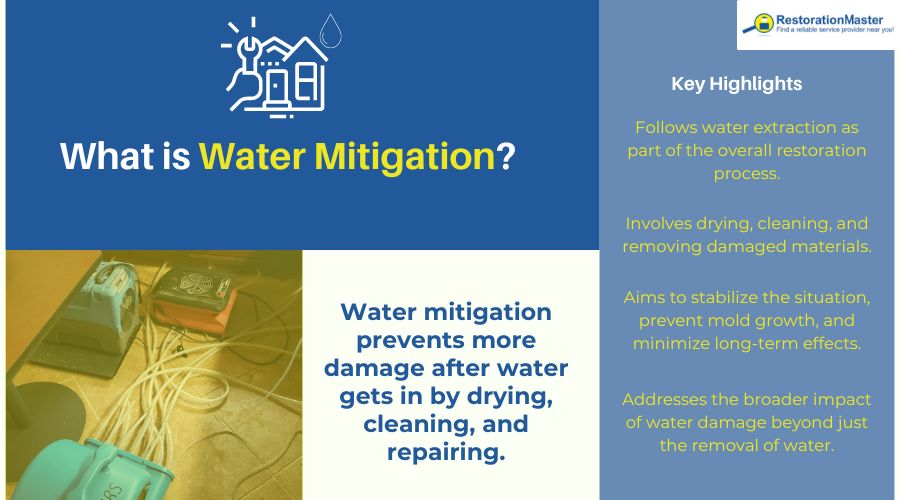
The water mitigation process involves:
- Removing natural and man-made debris from the property
- Removing damaged furniture and building materials, including drywall and flooring
- Stabilizing the property and protecting the integrity of the building by boarding up windows, applying tarps, and taking other necessary precautions
- Cleaning and disinfecting salvageable contents
- Cleaning and disinfecting household materials and surfaces
- DryingDrying is the process of removing moisture from materials, s... More out the home with commercial-grade equipment
Proper dryingDrying is the process of removing moisture from materials, s... More is of paramount importance as the affected area needs to be fully dry before repairs can begin. Depending on the type of water event, it may take from a few days to a few weeks for a property to dry completely. Skipping this step, however, or finishing it prematurely or inefficiently can compromise the structural integrity of the building.
All remaining moisture must be eliminated from the air and the structural materials for a successful water damage restoration. Water mitigation specialists use diagnostic tools, like moisture meters, to measure dampness levels and set up powerful equipment, like industrial dehumidifiers, air scrubbers, and air movers, to dry the property. Wood floor dryingDrying is the process of removing moisture from materials, s... More systems, sub-floor dryingDrying is the process of removing moisture from materials, s... More systems, and high-speed fans are also used to evaporate any leftover moisture and restore the correct humidityHumidity is the amount of moisture or water vapor present in... More levels in the building so that floors, walls, and furnishings don’t rot, swell, or warp and mold-friendly environments are successfully eliminated. The professional dryingDrying is the process of removing moisture from materials, s... More equipment and air sanitizersSanitizers are chemical agents used to reduce bacteria and m... More must be left onsite at the property until temperature, humidityHumidity is the amount of moisture or water vapor present in... More, and moisture testing confirms that the affected area has been fully dried and restored to a safe and healthy condition.
However efficient though, water damage mitigation services are meant to prevent further damage, not to repairRepair is the act of fixing or restoring damaged property, m... More or replace damaged property. Water damage restorationWater damage restoration is the professional process of clea... More services are required for restoring the home or commercial building to its pre-loss condition.
What Does Water Damage Restoration Involve?
After the water mitigation process has ended, water damage restoration professionals focus on reconstructing and rebuilding the property (if needed) and fixing any subsequent issues related to the water damage (such as moldMold is a type of fungus that grows in damp or humid conditi... More development). Typical water damage restorationWater damage restoration is the professional process of clea... More services include:
- Replacing damaged flooring, drywall, and other building materials
- Repairing roof damage
- Eliminating moldMold is a type of fungus that grows in damp or humid conditi... More
- Conducting humidityHumidity is the amount of moisture or water vapor present in... More and moisture testing to ensure humidityHumidity is the amount of moisture or water vapor present in... More levels in the property have returned to normal
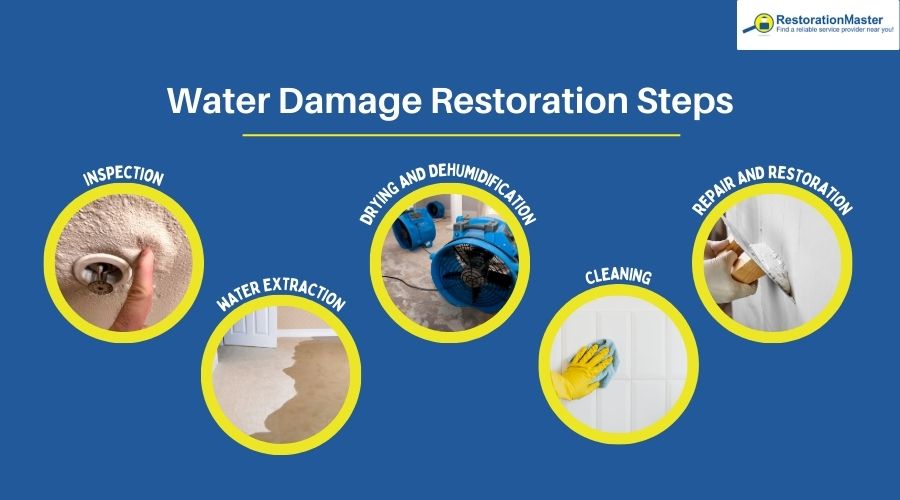
Repairing the structural damage is the last stage of the restoration process – water damage restorationWater damage restoration is the professional process of clea... More starts with water extraction, continues with water mitigation, and finishes with water damage repairRepair is the act of fixing or restoring damaged property, m... More. Even though these services can be performed separately, professional water damage restorationWater damage restoration is the professional process of clea... More companies provide all of them to ensure the best possible results – water mitigation services are always performed first, followed by water mitigation and water restorationRestoration is the process of returning a property to its pr... More services, as needed.
If you ever face a water damage accident, whether it is basement floodingFlooding is the overflow or accumulation of water in areas t... More, sewageSewage is wastewater containing biological and chemical cont... More backup, or commercial water damage, be sure to call a reputable water restorationRestoration is the process of returning a property to its pr... More company without delay – the experienced professionals have the specialized equipment and expert know-how to restore your property in a quick and efficient manner, so you can get your life back on track as soon as possible after the disaster.










